“We all worked like hell to make it work” Inside British Leyland. Stories from those at the coalface. So says Simon Pearson of his time at the much-maligned British Leyland. Martin Buckley gets the warts-and-all story of gifted designers, flawed gems and closed shops from a quartet of former colleagues. Photography James Page/LAT.
We tend to think of British Leyland as a sprawling, unwieldy and inefficient industrial giant shambling its way from crisis to crisis, a universal joke lampooned by everyone from Fleet Street to The Two Ronnies. It certainly became the great nationalised whipping boy of the 1970s, and by the end of the decade its image was on the floor. Only British Rail and its curly-edged sandwiches ranked lower in the public’s estimation.
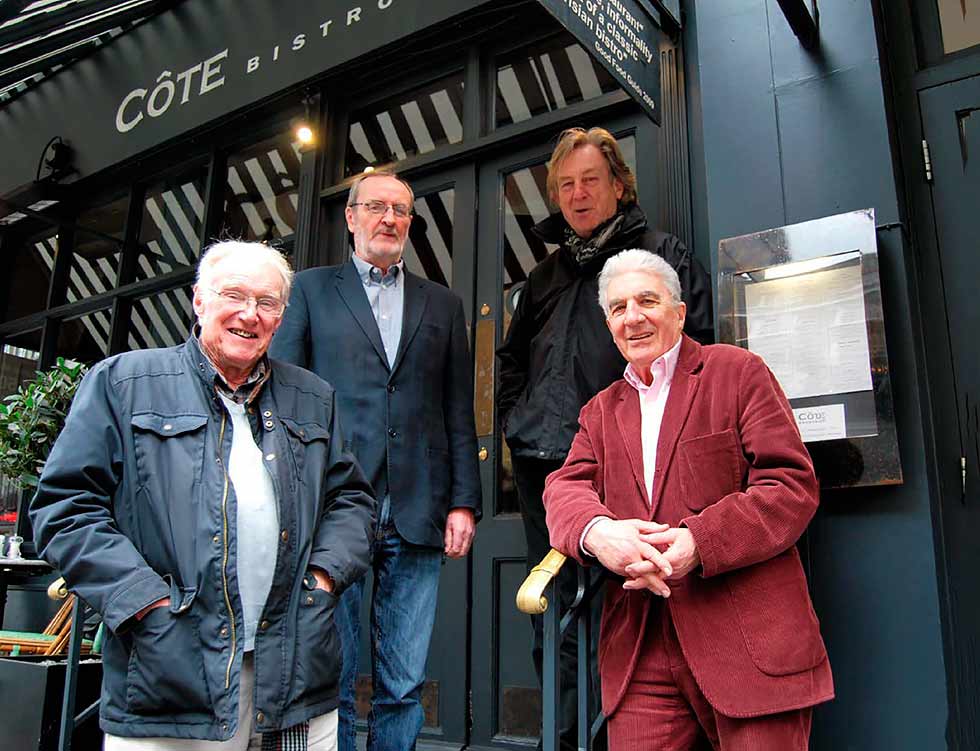
BL still conjures images of half-finished Marinas and Allegros on desolate production lines and a militant workforce that appeared to be looking for any reason to down tools. It seemed that if they weren’t being caught sleeping on the night shift they were standing on a picket line, the enduring images of TV news bulletins if your memory goes back that far.
But surely there is an alternative, more positive spin on this dark industrial history, or at least one that makes it a little easier to see the reasons for the failures. Here, after all, was the world’s fourth-biggest car maker building the planet’s most complete and ambitious range of vehicles. At the time of the infamous Ryder Report (and nationalisation), BL offered everything from Europe’s most celebrated (and imitated) small car to a 150mph V12 coupé that was acknowledged as the most refined and accomplished of its type.
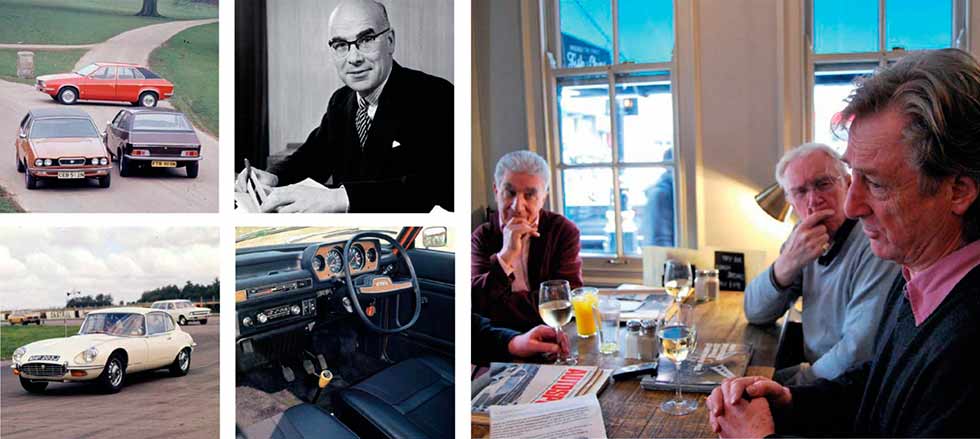
In between there were trucks, buses, tractors, taxis, limousines and sports cars, most of them conceived by the industry’s most imaginative post-war designers and stylists – geniuses of the ilk of Alec Issigonis, David Bache, Bob Knight and Spen King. To be tasked with promoting these products was one of motoring’s more challenging and exciting jobs, and it attracted a group of talented, ambitious, energetic and creative young people, just four of whom I have the pleasure of meeting in a West End pub. Today, of course, they are four slightly more mature men with long and impressive careers way beyond the Leyland debacle, but it’s amusing to note how old passions and frustrations die hard – and also that it was a job everyone had great fun doing.
The great BL adventure started promisingly, as Tim Greenhill points out: “When I began as an apprentice, the 1100/1300 had 15% of the UK market and BMC overall had 30%: when it joined Leyland, Rover and Jaguar, it had 60%!”
In fact, there was never a problem selling Rovers, Jaguars or Triumphs, which didn’t have the image problems of the more strategically important family models. “I was involved in hire and lease sales,” he explains, “and if someone wanted an XJ6 or a Stag, I just told them that they had to take half a dozen Marinas as well.”
Greenhill worked at BMC/BL for 13 years, starting as a ‘Technical sales’ apprentice in 1966 and finishing up as Jaguar’s marketing manager when the SIII XJ was launched. He worked variously for Morris, Austin, BMC, BLMC, BMLH, Leyland Cars, Austin-Morris and Jaguar-Rover- Triumph – “That’s roughly a new corporate brand every 10 months” – and on the launches of the Allegro, 18-22 Series, TR7 and XJ-S. “At that time, BL had the biggest advertising budget in the UK,” he says, “and we gave Saatchi its first-ever car account, which was the Princess.”
Dapper, silver-haired Alan Zafer, who began at MG, goes further: “It was probably the greatest range of cars under one umbrella. The demise of the firm was nothing to do with the design and engineering.” He often had to sort problems with shop stewards, “though on many occasions we ended up discussing nothing more profound than the colour of the ladies’ toilets.”
As PR man for the Comps Department, Zafer spent a lot of time at Abingdon: “One day after the merger, a Standard Atlas van turned up with two men from Canley to take down the MG Octagon off the front of the building and replace it with the ‘Flying A**ehole’ Leyland insignia. Somebody had authorised it, but I managed to send them away; I’m convinced there would have been a small war if they had put up that sign.”
When former Triumph and Leyland Special Tuning man Richard Seth Smith arrives, proffering a rare Rover SD1 press pack, all concerned nod sagely at the suggestion that this was yet another brilliantly conceived but indifferently executed car. Seth Smith joined Leyland Motor Corporation as Triumph press officer in ’1967, and in ’1968 helped with the famous announcement of the Leyland and BMH merger. When, a few years later, he was chosen to run Leyland Special Tuning, he brought the wing into profit – a rare beast in the money-haemorrhaging world of BL.
But if the SD1 receives a vote of confidence, what about the great unmentionables – the likes of the Allegro, Marina and Princess? “Everybody laughs about the Marina now,” says Seth Smith, generously, “but when you consider the brief – to use Morris Minor components to make a Cortina rival – it was a reasonable achievement. And apart from the stupid steering wheel, the Allegro was pretty good, and a lot less labourintensive to produce than the 1100/1300.”
Was the UK press quicker to stick the boot in when things went wrong than they were in, say, France? “Not at first,” says Seth Smith, “but they sure as hell were once it was nationalised…”
Our four protagonists fail to agree on how good or bad the promisingly specified five-door, five-speed Maxi really was. “It was the only new car on the books when [British] Leyland was formed on 2 January 1968,” says Seth Smith, “and it was abysmal – particularly the gearchange.”
There is, however, consensus that the Princess was a better car than it was given credit for, but Greenhill’s account of the Princess 2 launch in the late 1970s is a microcosm of the ingrained and intractable cultural problems they were up against: “We took a set of cars to Nardo in Italy to do ‘two years’ driving in two weeks’ to prove the new O-series engine. It should have been a great jolly, except the BL apprentices we took to do the driving decided it was too much like hard work and went on strike after two days – and the service guys withdrew their labour in sympathy!”
“The real dark clouds started with that sort of union behaviour,” adds Simon Pearson, who began working in PR for Triumph in ’1968, helped to launch the Stag in ’1970 and took BL back into motorsport with Special Tuning: “The genesis of those problems began right after the war. People were not being properly paid and rewarded so they got together and formed their own alliance. The number of strikes was incredible.”
On the subject of closed shops, Greenhill says: “There was a discussion as to whether the sales office where I worked should become a closed shop. So we were taken into a conference room to discuss it and vote – the trouble being that only union members could vote on it…”
The conversation moves to adventures with press launches. Seth Smith recalls the introduction of the Series III E-type in 1971: “We took journalists to Browns Lane and had a nice presentation on the V12 then took them on a tour of the new engine shop. I’d never seen anything like it in my life – the place was awash with aluminium slurry and on the end of the transfer line was the tub of an Alvis scout car just propped up.”
“When I went to BMW in ’1979,” adds Greenhill, “I asked how test cars were prepared, and they said: ‘We just de-wax and run them in.’ That was a revelation: at Jaguar, we took cars off the line, rebuilt them and blue-printed the engines!” The Allegro was quite well received in Spain in 1973, although Zafer recalled a Fleet Street writer breaking his thumb on the Quartic wheel as it self-centred: “So we sent off for a batch of circular wheels; that just resulted in journalists cutting their hands to shreds because they hadn’t been properly finished off on the outside edge.”
To add insult to injury, an air traffic control strike over French air space meant that Leyland had to rent a Pan Am 747 to get the hacks back home. One factor perhaps not widely understood is that chronic under-investment meant that many major components were being built on pre-war tooling, whereas the Germans, for example, had all the latest kit. “When we were given more money to buy, say, new transfer lines,” says Seth Smith, “we were restricted by government rules to buying sometimes inferior local tooling.”
Then there was the way that the cars were produced. “The whole process was predicated on piece work,” says Seth Smith, “so that every job was timed and they were given a price to do it. The idea was that they should be able to make triple time: do each job in a third of the time allowed – which meant that by half past two everyone would pack up and bugger off home!”
And you can’t discuss BL without including ‘Red Robbo’ – Derek Robinson, the shop steward. “He was a lovely guy,” recalls Greenhill, “when you weren’t in a meeting with him.” Was he a communist infiltrator? “I couldn’t say,” says Seth Smith, “but there was a lot of leftwing ideology about, and he was a smart and quite powerful individual, a natural leader.”
Talking of leaders, history has not been kind to Lord Stokes, but all here recall him as a capable boss who had simply been handed one of the most thankless tasks imaginable. Says Pearson: “We had quite regular contact with DGS – as he was known internally. He was accessible to all, cogent – and a listener! How many CEOs could you describe in those terms today?” Zafer went to Stokes’ memorial service: “People stood up and said some great things about him: told the truth. I just wish they’d said it while he was alive.”
Harold Wilson appears to be much more the villain of the piece. “Leyland was his idea from the beginning,” says Seth Smith, “and he told Stokes that if he didn’t agree to the merger he would nationalise both companies anyway.” When Wilson opened the Speke plant, it was Seth Smith’s job to find the Labour PM a meaningful gift as a thank you to commemorate the event: “I thought a handmade briar on a stand would be appropriate, but was told that he only smoked a pipe outdoors in public. Could he please have three large boxes of Cuban cigars instead?”
Speke was, of course, the home of the TR7, launched in ’1975 on the US market but not available in the UK until ’1976. “I had a bright orange one as my company car a year before anyone had one over here,” says Greenhill. “It was a fantastic shape but, when I parked it, nobody looked at it. I realised that it wasn’t going to sell – somehow it had no presence. Harris Mann’s drawings were a lot more emotive than the car itself.”
I’m not quite a BL revisionist, but I’ve been of the opinion that its long and painful public suicide was merely the end result of a set of circumstances that had their roots in the mists of time – long before most of the main human protagonists in this great industrial drama were old enough to drive. The hours I spent with Simon, Richard, Alan and Tim confirm that belief. I will leave the last word to Pearson, the man who got this fascinating group together: “We all worked like hell to make it work, for not much money. I don’t think we realised what halcyon days we were living through at the time.”
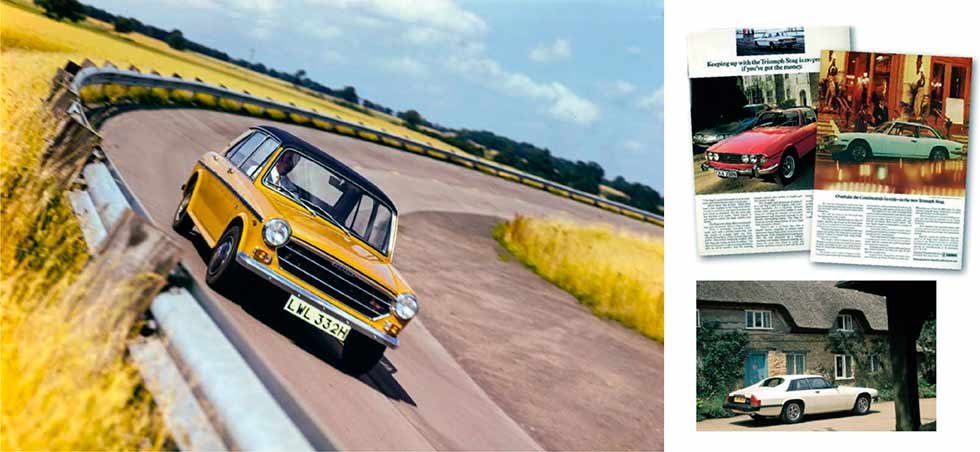
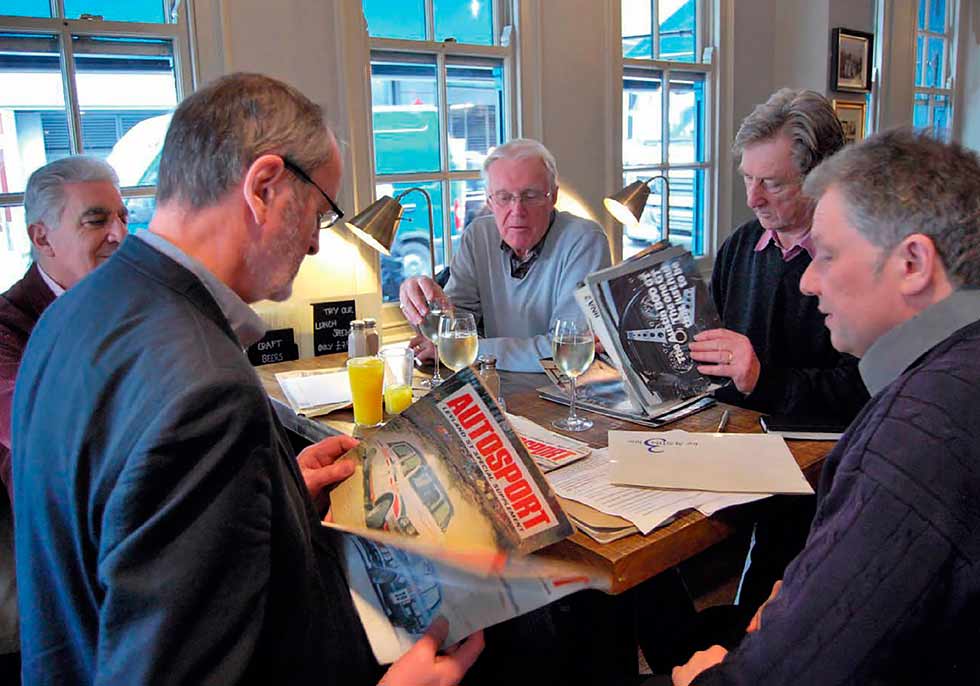

‘AT THE TIME, BRITISH LEYLAND HAD THE BIGGEST ADVERTISING BUDGET IN THE UK’
AS PEARSON RECALLS: “LORD STOKES WAS COGENT, ACCESSIBLE TO ALL AND A LISTENER!”
BL’s rise and fall
January 1968 The British Leyland Motor Corporation is formed following the merger of the Leyland Motor Corporation and British Motor Holdings. Leyland man Sir Donald Stokes is installed as the company’s chairman.
1971 The Morris Marina is launched. In 1973, it becomes the UK’s second-biggest seller.
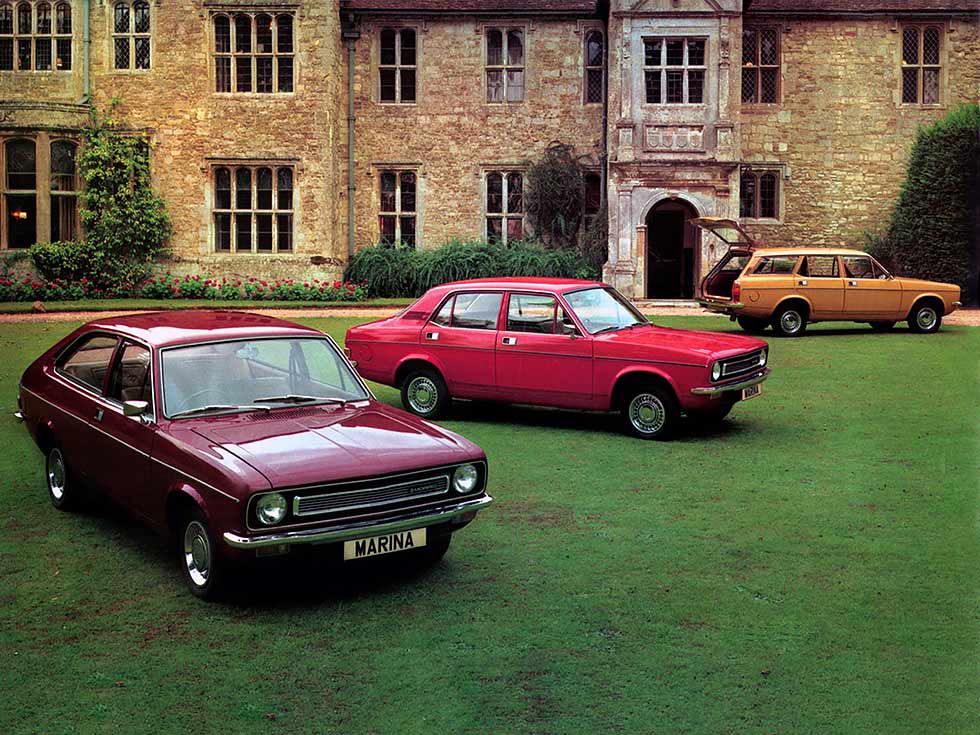
1973 BL introduces the Allegro with a choice of A- and E-series powerplants.
January 1975 The Triumph TR7 makes its debut in the American market, with UK sales starting the following year.
March 1975 The ADO17 1800/2200 range is replaced by Austin, Morris and Wolseley variants of the new 18-22. In September, they are all unified under the Princess banner, marking the end of the Wolseley name.
March 1975 Sir Don Ryder, head of the UK’s National Enterprise Board, publishes his report on BL. British Leyland: The Next Decade recommends that the government invests heavily in order to guarantee its future, in effect nationalising it.
September 1975 The controversially styled Jaguar XJ-S replaces the E-type.
March 1977 The Rover SD1 (below) receives the European Car of the Year accolade.
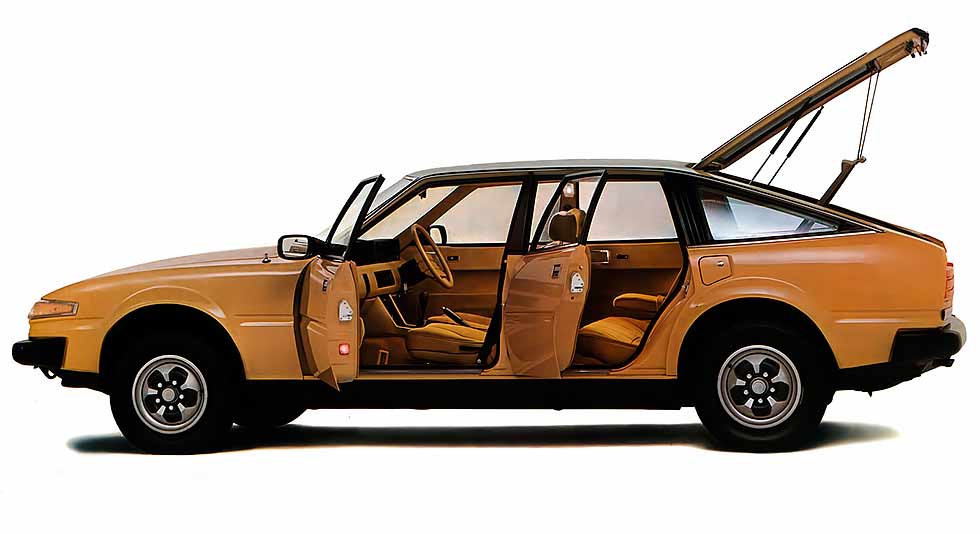
1977 Michael Edwardes is appointed chief executive. The Leyland Cars division is split into Austin-Morris and Jaguar-Rover-Triumph.
1980 The MG plant at Abingdon closes, as does the Triumph factory in Canley.
October 1980 Following investment in a new assembly line at the Longbridge facility, the Austin mini Metro is launched.
1981 BL Cars Ltd is renamed Austin Rover Group. The Triumph Acclaim – a joint project with Honda – is introduced.
July 1984 Jaguar – which, along with Daimler, had been in a BL division called Jaguar Car Holdings – is floated on the Stock Exchange.
1986 BL changes its name to Rover Group. It is bought by British Aerospace in 1988.





